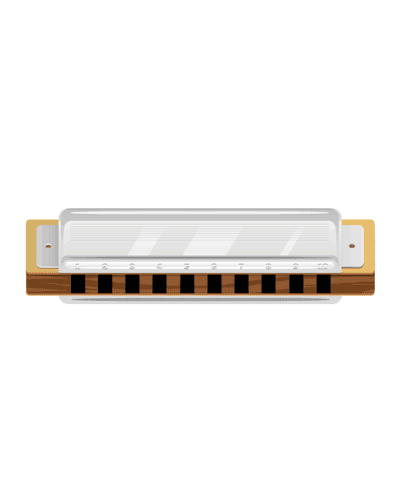Tim Wall - 16 / Oct / 2020
A Brief Intro To Harmonicas

The harmonica is a versatile wind instrument used in many genres, most famously in blues, folk, country, and rock music. It's a great instrument with a relatively low barrier of entry in both playability and affordability. It is played by placing your lips over the holes on the face of the instrument and blowing into or drawing air out of them. In this article, we're going to talk about three popular types of harmonicas: diatonic, chromatic, and tremolo. While there are other types of harmonicas available, these three are the most commonly used.
Types of Harmonicas
Diatonic
Diatonic harmonicas are a great option to get started. These harmonicas most commonly have ten holes and are often used in blues, rock, and country music. Each diatonic harmonica is set up in one key, meaning you'll need a set of 12 harmonicas if you want to play in each key. That being said, it is possible to use advanced techniques that allow you to "bend" notes to play notes that go beyond that intended key. That bending sound is what you hear in a lot of blues music featuring a harmonica, and is what draws a lot of people to the diatonic harmonica. For those just getting started, we recommend starting with the key of C.
Chromatic
Unlike diatonic harmonicas, chromatic harmonicas can play all the notes in the chromatic scale. The button-activated sliding bar redirects the air to one of two separate reed plates, allowing you to play the 12 notes of the chromatic scale. The reeds and plates in these harmonicas tend to be a bit heftier, which limits the bending capabilities but allows it to produce a more rich sound compared to the diatonic harmonica. Chromatic harmonicas are most popular in jazz, classical, and pop music genres.
Tremolo
Tremolo harmonicas produce a beautiful vibrato effect by using two reeds per note, each tuned slightly different from the other. They are available in both diatonic and chromatic configurations.
Harmonica Components
Harmonicas are made up of a few parts: the comb, reed plates, and the top and bottom cover plates.
The Comb
The comb is the main part of the body of the harmonica. Combs are traditionally made out of wood but are now often made with plastic or metal. The cuts in the comb make up the holes you see on the face of the instrument, called reed chambers. Traditionally, combs are made of wood, but are now also commonly made from other materials like plastic and metal. Each different material used for the comb will have its own subtle effect on the sound, and have different levels of durability. More experienced players may have a preference of which material they prefer for their harmonica, some find that wood combs might have a bit of a warmer sound, whereas metal combs might be a bit brighter.
Reeds & Plates
Reeds are thin strips of brass fastened at one end to the brass plate, they line up with the holes the comb provides when the harmonica is assembled. Blowing air into or sucking the air out of the reed chambers causes the loose ends of the reeds to vibrate up and down, creating the sound. Over time, or if the harmonica is played too hard, the reeds can crack and go out of tune. In that case, either the reed or the harmonica needs to be replaced.
Cover Plate
The cover plates are the top and bottom covers that sandwich the comb and reed plates. These are usually made of metal, wood, or plastic. The shape and materials used have a strong influence on the projection and overall tone of the harmonica.

If you need any help finding the right harmonica to get you started, please send us an email or chat with us using the chat widget on the bottom right, we would love to help!
If you liked this article, feel free to check out the other posts in our Learn section!










